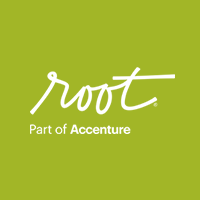Traditionally, talent leaders have been split into two groups: either buying talent development solutions or building them internally. I know I’m simplifying here, but generally, talent leaders have had a clear preference for their solutions.
It typically goes like this:
-
Talent “buyers” preferred
- Established programs from “known” providers
- Ready-to-go programming that promised easy integration with their teams
- A tested, proven program or experience
- The option for some minor personalization (within a given framework or process)
-
Talent “builders” preferred
- The ability to create a new experience from start to finish, including content development, design, and delivery
- To call out the unique characteristics of their organization
- To fully own the deliverable and control all future iterations
Based on their preference, talent leaders would then establish their external partners, form their internal teams, and make it happen. Pretty straightforward, right?
Well, times are changing! Technology advancements, mountains of content, and evolving user expectations have all blurred the lines between “buying” and “building.” Now, it’s more like “buy, rent, borrow, build, create in the moment, customize, tweak,” etc. It’s not just buying or building anymore.
So Many Choices
On the surface, this sounds great. But with so many options, it’s more difficult for talent leaders to filter out the noise to determine what’s most effective. Exclusively “buying” or “building” may not even be possible anymore.
Today’s challenges are more complicated than ever. These are the most common questions we hear.
- We invested in just-in-time development and IDPs, and the participants love it. But everyone’s running in their own direction. How do we connect everyone to the bigger picture of our business?
- We can’t bring people together. But we can’t just send them through yet another e-learning module. How do we deliver engaging experiences in today’s work environment?
- We rolled out new leadership behaviors, but it didn’t drive adoption. How do we get unstuck?
- We are going through a huge change. How do we get our people to lead “through” change when we can’t provide all the answers?
- How do I help our emerging leaders understand the business in a meaningful way (e.g., how we make money, what makes us unique)?
- We have lots of development opportunities, but we don’t have an effective way of showing our people all the options they have. How do we show the bigger picture of the employee experience?
These are big questions. The answers depend on many factors.
Tips for Navigating Talent Development Today
Tip #1: Focus on the problem before the modality.
Too often, learning and leadership solutions are designed based on the logistics, before the outcomes are established. Logistics are a big deal; I get it. Most of the work we do is with Fortune 500 companies, and the time and attention demands are very real. But please—start with what people need to think, feel, or do. Then, move to the logistics.
Tip #2: Be realistic about the degree of change.
Start by asking what your people need to do moving forward, and how that is different from what they do today. The solution you are considering should be relative to the problem you are solving. Be realistic about the degree of change. For example, if you are trying to drive innovation, it’s not possible to make people more innovative by just completing a 15-minute e-learning course on innovation. Sounds funny, right? Unfortunately, it happens all the time. Focus on the degree of change, and then work backward.
Tip #3: Connect to the bigger picture.
Clearly, individual leadership development plans are important. But leaders need to be connected to the bigger picture and purpose of an organization to truly drive results. For example, in athletics, everyone has their own diet plan and workout regimen. But they still have a game plan for how to win as a team.
The Path Forward
Talent development is my passion, so if you want to chat about any of these concepts, please reach out.






